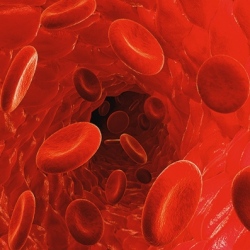
Immunity is the most reliable way to protect yourself from viruses, bacteria and parasites. And the best way to acquire such immunity, in most cases, is to expose your immune system to the bug in question, either by getting infected or getting immunized. Until now, such protection was only possible with diseases like chicken pox or polio.
Scientists at Harvard University say that people might soon arm themselves against HIV in a similar way, but through a different method. Chad Cowan and Derrick Rossi, both in the department of stem cell and regenerative biology at Harvard University, and their colleagues report in the journal Cell Stem Cell that they have successfully edited the genomes of blood cells to make them impervious to HIV.
In order survive, HIV needs to insert its genome into that of a healthy cell, and to infect these cells, HIV latches onto a protein on their surface called CCR5. If CCR5 is mutated, however, it’s as if the locks have been changed and HIV no longer has the right key; it can’t attach itself and the cells are protected from infection.
So the scientists tried a new gene editing technique called CRISPR that allows them to precisely snip out parts of a cell’s genome, and they spliced out the CCR5 gene. To their surprise, the technique was relatively efficient, transforming about half of the cells they treated with CRISPR into CCR5-free, or HIV-resistant, cells.
“It was stunning to us how efficient CRISPR was in doing the genome editing,” says Cowan. Scientists have previously used CRISPR to make another change in how HIV infects cells; they snipped out the HIV genes that the virus inserted into healthy cells. That process essentially returned HIV infected cells back to healthy ones.
The latest results, however, suggest that the technique may be useful even before HIV gets inside cells. CRISPR could be useful in treating HIV patients if it can replace patients’ own immune cells with the blockaded versions. The cells Cowan and Rossi used were blood stem cells, which give rise to the body’s entire blood and immune system.
In order to work as a potential treatment for HIV, patients would provide a sample of blood stem cells from their bone marrow, which would be treated with CRISPR to remove the CCR5 gene, and these cells would be transplanted back to the patient.
Since the bone marrow stem cells populate the entire blood and immune system, the patient would eventually have blood cells that were protected, or “immunized,” against HIV. “We’re removing the doorway that HIV uses to get into cells,” says Cowan.
